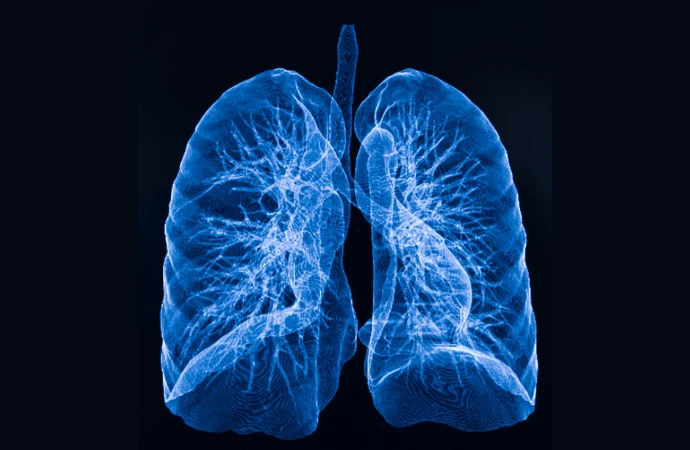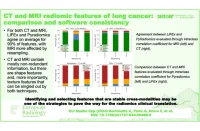Deprivation, measured by the Index of Multiple Deprivation (IMD) in the UK, is linked to numerous health issues, including a higher risk of lung cancer. A significant disparity exists in smoking prevalence between socioeconomic groups, with 23.8% of those in the most deprived neighbourhoods being current smokers in 2021, compared to 6.8% in the least deprived areas. Socioeconomic status remains a lung cancer risk factor even after accounting for smoking behaviours.
When implementing lung cancer screening at the population level, risk assessments based on age and smoking history are used to identify at-risk populations. Understanding how these risk assessments affect different socioeconomic groups is crucial, as failure to consider higher risks and poorer outcomes in more deprived areas may increase health disparities. Previous screenings for breast, cervix, and colorectal cancers have shown lower uptake among deprived groups.
The UKLS low-dose CT (LDCT) screening trial has shown a mortality benefit for lung cancer screening in high-risk populations. This study examines the relationship between lung cancer risk and socioeconomic status, and the impact of LDCT screening on mortality outcomes within different socioeconomic strata. The UKLS trial is particularly relevant due to its diverse representation of IMD quintiles and extensive follow-up data on mortality and lung cancer incidence.
UKLS Randomised Trial and LDCT Screening Effectiveness
This post-hoc analysis of the UKLS randomised trial examines updated mortality data, stratified by socioeconomic status using the Index of Multiple Deprivation (IMD) quintiles (Q1 most deprived to Q5 least deprived). Participants received either a low-dose CT scan (CT) or usual care (control). IMD scores were anonymised and grouped into quintiles, further categorised into more deprived (Q1-2) and less deprived (Q3-5) for outcome analysis, with equal proportions of subjects receiving LDCT in each IMD group.
The UKLS trial, conducted at Liverpool Heart and Chest Hospital and Royal Papworth Hospital, involved a target population of 249,988 individuals aged 50-75 from nearby primary care trusts. After an initial risk assessment via questionnaire, 4,055 high-risk individuals were randomised into the trial, excluding those with contraindications. The LDCT group received a baseline scan and follow-up scans based on nodule size.
Outcomes, including lung cancer mortality, incidence, and other causes of death, were tracked using data from NHS Digital and the National Cancer Registration and Analysis Service (NCRAS) until September 2022. The primary outcome was lung cancer mortality, with secondary outcomes including lung cancer incidence, mortality from other causes, and cancer stage and histology.
Statistical analysis involved Log-Rank tests, Kruskal-Wallis, Pearson's chi-square, and Cox proportional-hazard models, using IBM SPSS Statistics and Stata software. The study aimed to understand the impact of socioeconomic status on lung cancer mortality and the effectiveness of LDCT screening within this stratified high-risk cohort.
Key Findings
- Effectiveness of LDCT Screening: LDCT screening did not lead to overdiagnosis, as there was no excess incidence of lung cancer in the LDCT arm. Early-stage cancers were more frequently detected in the LDCT group, leading to better outcomes regardless of socioeconomic status.
- Impact on Health Inequalities: The study found no significant differences in lung cancer outcomes between lower and higher socioeconomic groups, suggesting that risk-based screening can help mitigate health disparities. However, those in lower socioeconomic quintiles might benefit from more frequent screening and better access to LDCT facilities.
- Long-Term Benefits: The overall improvement in lung cancer outcomes in the LDCT arm was mainly due to early detection. Additionally, LDCT screening contributed to reduced mortality from other smoking-related diseases like COPD and emphysema, particularly in more deprived groups.
- Participation and Awareness: Lower socioeconomic groups had lower participation rates, indicating a need for improved engagement and communication strategies to address fatalism and negative attitudes toward screening.
- Broader Health Impacts: The reduction in all-cause mortality in more deprived groups might be due to improved detection of other conditions like cardiac disease or COPD during LDCT screening, though specific data on these factors were not available.
The study emphasises the potential of risk-based lung cancer screening to improve health equity and suggests that additional efforts are needed to enhance participation and address health needs in more deprived communities. Future research should focus on confirming these long-term benefits and understanding the reasons behind them, including the impact of LDCT screening on other smoking-related diseases.
Source: The Lancet
Image Credit: iStock








